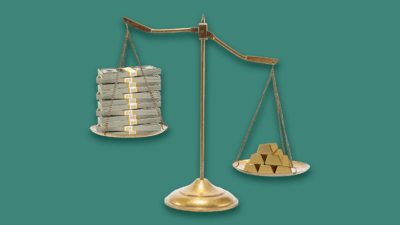How ETFs Can Help When Rates Are Going Up or Down
Advisors know exchange-traded funds as a way to invest in broad market indexes, but they are great for bond management, too.

Sign up for market insights, wealth management practice essentials and industry updates.
The Fed keeps lowering rates, but long-term bond rates keep going up?
That’s bond investing for you, where the market can be notoriously hard to predict and almost impossible during an election year. That’s because bonds are a much larger market than equities and much less gamified. The global bond market was worth $140 trillion — about 20% larger than the global stock market — at the end of 2023, and is impacted by multiple trends all at once. But, regardless of which part of the curve and what direction an advisor expects rates to travel, there are ETF strategies that can help.
Leave the Light On?
The Federal Reserve used to be, well … reserved. But in this age of 24/7 blanket news coverage of financial markets, the light to the fishbowl is always on. Many investors don’t realize that the Fed only sets overnight lending rates. The rest of the bond curve does its own thing. That explains why 10-year rates have moved from 3.7% to 4.5%, two months after the Fed’s first rate cut on September 18, which usually pushes rates down.
The unorthodox move is due in part to concerns over the economic policies of a new administration, like tariffs and spending, that could curb growth or even spur inflation. It’s also signaling that U.S. debt may finally be too big to not fail. Advisors simply can’t afford to be novices when it comes to non-equity investing.
Bond, James Bond
Everyone knows about some of the largest bond ETFs — like iShares 20+ Year Treasury Bond ETF (TLT) and SPDR Bloomberg 1-3 Month T-Bill ETF (BIL) — but there are other bond strategies out there that can help. While the popular TLT is set up to profit from falling long-term rates, the ProShares Short 20+ Year Treasury ETF (TBF) is essentially TLT’s mirror image, aiming to gain when long rates rise. There are a few other notable ones, as well:
- At the short-term end of the bond market, ETFs including the iShares Barclays Short Treasury Bond Fund (SHV) allocate between three month and 12 month T-bills, a simple but recently competitive strategy.
- And, for those who wish to own a basket of short-term bonds whose rates can rise with market rates, funds that target government and corporate bonds, such as the VanEck IG Floating Rate ETF (FLTR) are worth researching.
- Those who simply want to replicate the old “bond ladder” approach can look at Invesco Equal Weight 0-30 Year Treasury ETF (GOVI), among others.











